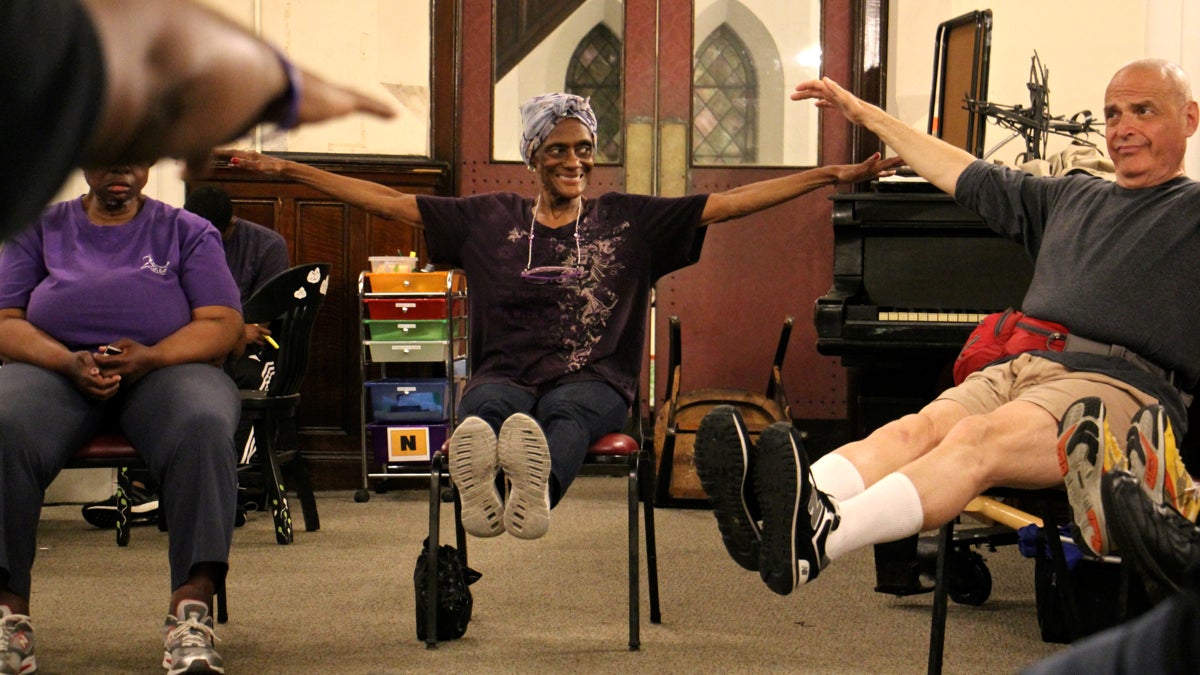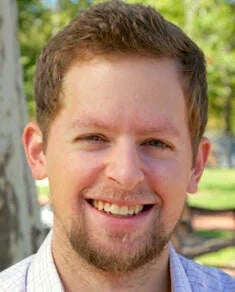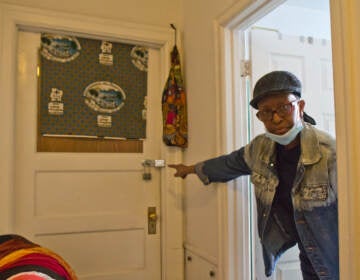Interlude from tedium, toll of homelessness awaits at Broad Street Ministry dance class
Listen
Miss Dee (center) participates in a dance and movement class at the Broad Street Ministry. (Emma Lee/WHYY)
It’s Friday afternoon. Dance time at Broad Street Ministry in Center City Philadelphia.
Inside the church’s spacious sanctuary, about a dozen homeless people loosen their neck muscles and stretch their legs with Jon Martin, a longtime dance instructor with the Pennsylvania Ballet who comes each week to lead an hourlong movement workshop. He likes to call it a soiree.
Ambient, soaring instrumentals flow out of a large speaker behind the circle of chairs as the group warms up.
To Martin, the goal of the class that started this fall is simple.
“Just to start moving. Just to get them moving in ways they may not have been doing for a while,” he says.
Answering an aesthetic need
For a population that doesn’t typically have immediate access to health care, the workshop’s physical benefits are obvious.
But there’s more to it.
In addition to being food and housing insecure, homeless people are also aesthetically insecure, meaning they don’t have much access to beautiful things or moments that make them feel beautiful.
“The ability to come in and think of their bodies as an instrument for art, to lose touch with their body, to use it in beautiful ways, to me, it’s transportive,” said Michael Dahl, the ministry’s executive director.
The class is also a vehicle for hitting the pause button on the constant stress of simply surviving. Dahl said that break from the day-to-day struggle of being homeless can give people the mental space to think about getting back on their feet — the metaphorical ones.
“You get a chance to think about things that are higher order — about what are my hopes, what are my dreams, what am I going through, can I work through issues that are bothering me,” said Dahl.
Jibril became homeless about two years ago after an uncle he was living with died from cancer. He’s participated in the workshop since the beginning, even though it’s outside his creative comfort zone.
It brings him peace and lifts his spirit the way drawing does.
“They don’t judge how you dance. Thank goodness,” said Jibril with a laugh. “You express yourself and do what you can and it work out.”
NewsWorks is withholding Jibril’s last name to protect his privacy and his chance to find permanent housing.
The dance begins
Martin wraps up the warm up with a smile and a semi-rhetorical question: “What a wonderful way to start a Friday afternoon, yes?”
Then, the chairs are pushed to the side to make room for dancing. First ballet, then a line dance backed by an aging boom box.
The room turns into what can best be described as an organized dance club. Everyone is dancing by themselves, but together, in rows.
“Can’t Stop the Feeling,” a high-energy pop song by Justin Timberlake, propels them. Martin too.
“Get some shoulders going in it. Get some hips going in it. Let go a little bit,” he instructs.
‘Kind of like vacation’
That’s easier said than done when you’re homeless.
“It’s not relaxing. A lot of times you get moved from place to place because police don’t want certain people at a certain location, even though you’re not doing anything wrong. It gets frustrating,” said Kimberly, another frequent participant of the class.
Kimberly has been homeless for a little more than two years. Things started going south after an injury forced her to file for disability.
The arts have always been her way of blowing off steam, and she said she feels great about the ministry’s movement class.
“Very calm. Very sedated. Kind of like I just went on vacation,” she said.
The class is equally therapeutic for staffers, who spend most of their time working through the challenges of being homeless with people trying to turn things around. Many stop by the class for a quick injection of positivity.
“They know they’re going to see smiles. They know they’re going to see people enjoying themselves. They’re going to see a wonderful moment,” said Dahl, the executive director. “We hang on those moments because that’s what fills us back up to come back the next week and do what we do.”
The curtain falls on the current version of the workshop with a performance at the end of the month, but there’s already talk of keeping it going beyond that.
WHYY is your source for fact-based, in-depth journalism and information. As a nonprofit organization, we rely on financial support from readers like you. Please give today.





